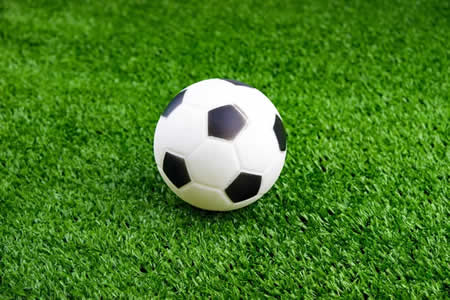Daycare & Playground Turf Safety Standards: ASTM, IPEMA & More

Playtime should be fun, but it should also be safe. Parents, daycare providers, and schools all share the responsibility of creating play spaces where kids can explore without unnecessary risks. That is where playground turf comes in. Modern turf systems are designed to look great, stay clean, and most importantly, protect children when the inevitable tumbles happen. As San Francisco synthetic grass experts, we know firsthand how much these safety standards matter, because they are the difference between ordinary turf and surfaces built to protect young children.
Why Safety Ratings Are More Than Just Numbers
It is easy to think of safety ratings as technical jargon, but for parents and caregivers they translate directly to peace of mind. These ratings measure how much shock a turf surface can absorb, how well it cushions falls, and how safe it is for daily use. At a daycare or schoolyard, kids can trip, fall, or jump off equipment hundreds of times in a week. Without a turf system that meets strict standards, those falls could lead to serious injuries.
The right turf reduces the risk of concussions, broken bones, and other preventable accidents. In other words, the ratings are not just paperwork. They are a promise that the playground is designed with children’s well-being at the center.
ASTM: The Science Behind Safer Surfaces
ASTM, or the American Society for Testing and Materials, is the gold standard for playground surfacing. Their most recognized guideline, ASTM F1292, measures fall height ratings. This test evaluates whether the turf can adequately cushion a fall from the tallest piece of playground equipment.
For example, if a jungle gym has a platform six feet high, the turf must prove through testing that it can reduce the impact of a child falling from that height. By meeting ASTM standards, turf is scientifically shown to limit the severity of injuries. For daycares and schools, that means fewer trips to the nurse’s office and more time for healthy, active play.
IPEMA: Independent Assurance for Parents and Schools
While ASTM sets the rules, IPEMA (International Play Equipment Manufacturers Association) makes sure turf products are actually living up to them. When a turf product is IPEMA certified, it has been independently tested and confirmed to meet or exceed ASTM safety requirements.
For parents, seeing an IPEMA seal is like seeing a trusted food safety label at the grocery store. It signals that the manufacturer’s claims have been verified. For daycare directors and school administrators, it offers confidence that their investment is truly safe for children.
Local Codes That Shouldn’t Be Overlooked
National standards provide the foundation, but cities and regions often add their own guidelines for playground surfacing. These may cover drainage design, fire resistance, or even environmental impact. That means a turf system cannot just be safe in theory. It must also work for the community it serves.
Professional installers bridge the gap between national standards and local codes, tailoring solutions that hold up under daily play and meet every regulatory requirement. The end result is a playground that is both compliant and built for the long term.
Why Artificial Grass Sets a Higher Standard
One of the biggest advancements in playground surfacing has been the rise of high-quality artificial grass. Unlike loose-fill materials that scatter or break down, turf provides consistent protection and an even surface. Many systems also feature padded underlayers that go beyond minimum fall height requirements, giving younger children an added level of protection.
We often recommend artificial grass for daycare playgrounds because it is easy to clean, non-toxic, and resistant to mud and pests. Parents appreciate that it stays green year-round, but its real value lies in safety. Children can run, roll, and climb without being exposed to hidden hazards like sharp wood chips or uneven ground.
Artificial grass also requires less upkeep than natural surfaces. No mowing, watering, or re-spreading mulch means staff can focus more on the kids instead of constant yard maintenance.
Understanding Turf Safety Standards
When evaluating playground turf, it helps to understand the language used in testing. Here are a few of the most important standards:
- Fall Height Rating: The highest equipment level the turf can safely support without severe injury risk.
- Gmax Value: A reading of surface impact that shows how well the turf cushions the head during a fall.
- Critical Height: The point at which a surface no longer offers adequate protection.
- Attenuation: How effectively the turf absorbs and disperses impact energy.
By understanding these measures, parents and administrators can compare turf options with confidence and make decisions that prioritize safety as much as appearance.
Building Safer Playgrounds for Kids
Daycares and schools have an incredible opportunity to create spaces where safety and play go hand in hand. By choosing turf that meets ASTM and IPEMA standards, and ensuring compliance with local codes, they give children the freedom to explore while reducing preventable risks.
When those standards are paired with the durability of artificial grass, playgrounds become cleaner, safer, and easier to maintain. It is a long-term investment in both safety and peace of mind for families.
Ready to upgrade your playground with safety-focused turf solutions? Contact us today and let’s create a play area designed for lasting protection.

